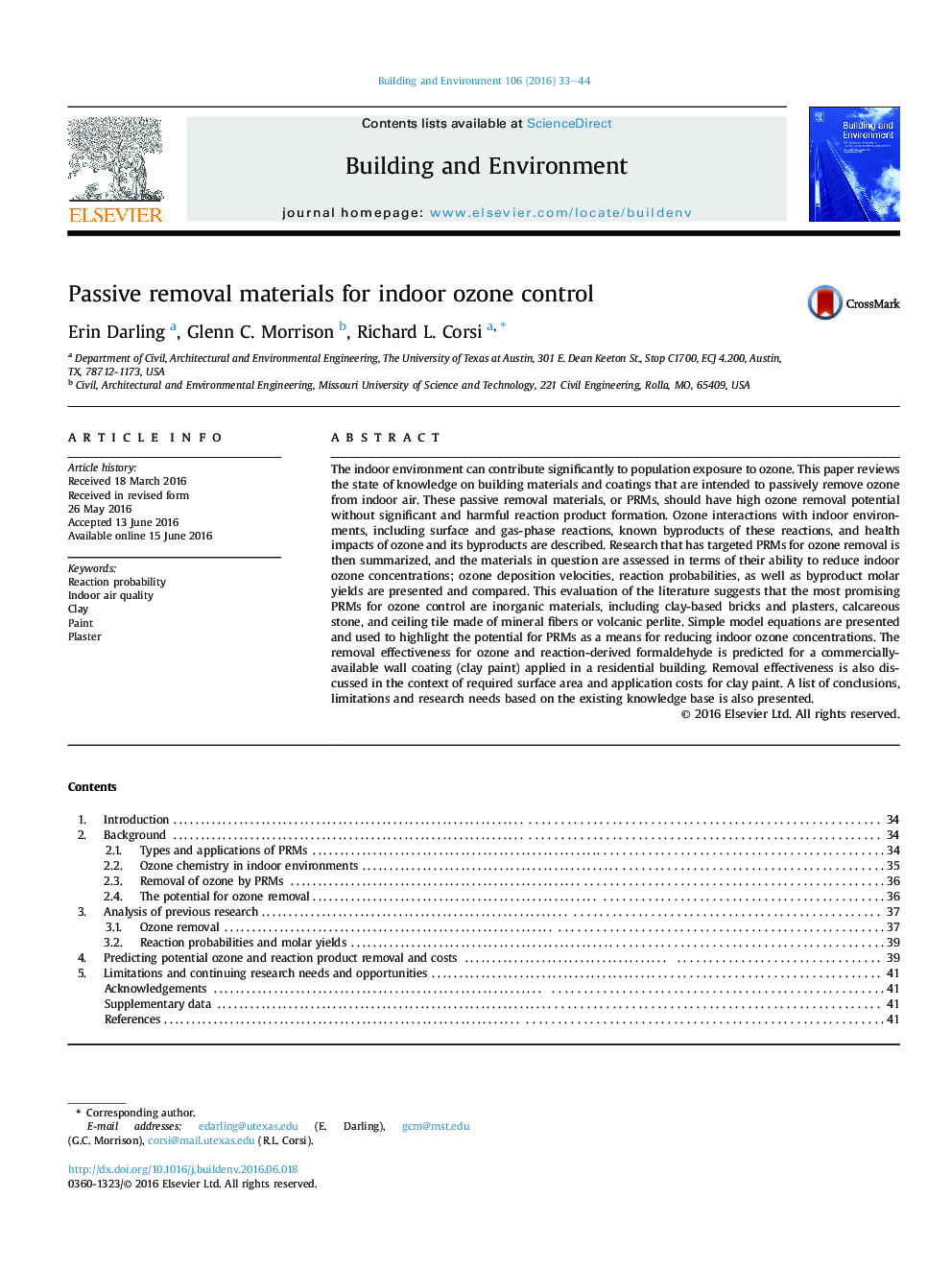| کد مقاله | کد نشریه | سال انتشار | مقاله انگلیسی | نسخه تمام متن |
|---|---|---|---|---|
| 6698703 | 502517 | 2016 | 12 صفحه PDF | دانلود رایگان |
عنوان انگلیسی مقاله ISI
Passive removal materials for indoor ozone control
ترجمه فارسی عنوان
مواد حذف مواد منفجره برای کنترل ازن در محیط داخلی
دانلود مقاله + سفارش ترجمه
دانلود مقاله ISI انگلیسی
رایگان برای ایرانیان
کلمات کلیدی
احتمال واکنش، کیفیت هوا داخل خاک رس رنگ گچ،
موضوعات مرتبط
مهندسی و علوم پایه
مهندسی انرژی
انرژی های تجدید پذیر، توسعه پایدار و محیط زیست
چکیده انگلیسی
The indoor environment can contribute significantly to population exposure to ozone. This paper reviews the state of knowledge on building materials and coatings that are intended to passively remove ozone from indoor air. These passive removal materials, or PRMs, should have high ozone removal potential without significant and harmful reaction product formation. Ozone interactions with indoor environments, including surface and gas-phase reactions, known byproducts of these reactions, and health impacts of ozone and its byproducts are described. Research that has targeted PRMs for ozone removal is then summarized, and the materials in question are assessed in terms of their ability to reduce indoor ozone concentrations; ozone deposition velocities, reaction probabilities, as well as byproduct molar yields are presented and compared. This evaluation of the literature suggests that the most promising PRMs for ozone control are inorganic materials, including clay-based bricks and plasters, calcareous stone, and ceiling tile made of mineral fibers or volcanic perlite. Simple model equations are presented and used to highlight the potential for PRMs as a means for reducing indoor ozone concentrations. The removal effectiveness for ozone and reaction-derived formaldehyde is predicted for a commercially-available wall coating (clay paint) applied in a residential building. Removal effectiveness is also discussed in the context of required surface area and application costs for clay paint. A list of conclusions, limitations and research needs based on the existing knowledge base is also presented.
ناشر
Database: Elsevier - ScienceDirect (ساینس دایرکت)
Journal: Building and Environment - Volume 106, September 2016, Pages 33-44
Journal: Building and Environment - Volume 106, September 2016, Pages 33-44
نویسندگان
Erin Darling, Glenn C. Morrison, Richard L. Corsi,
